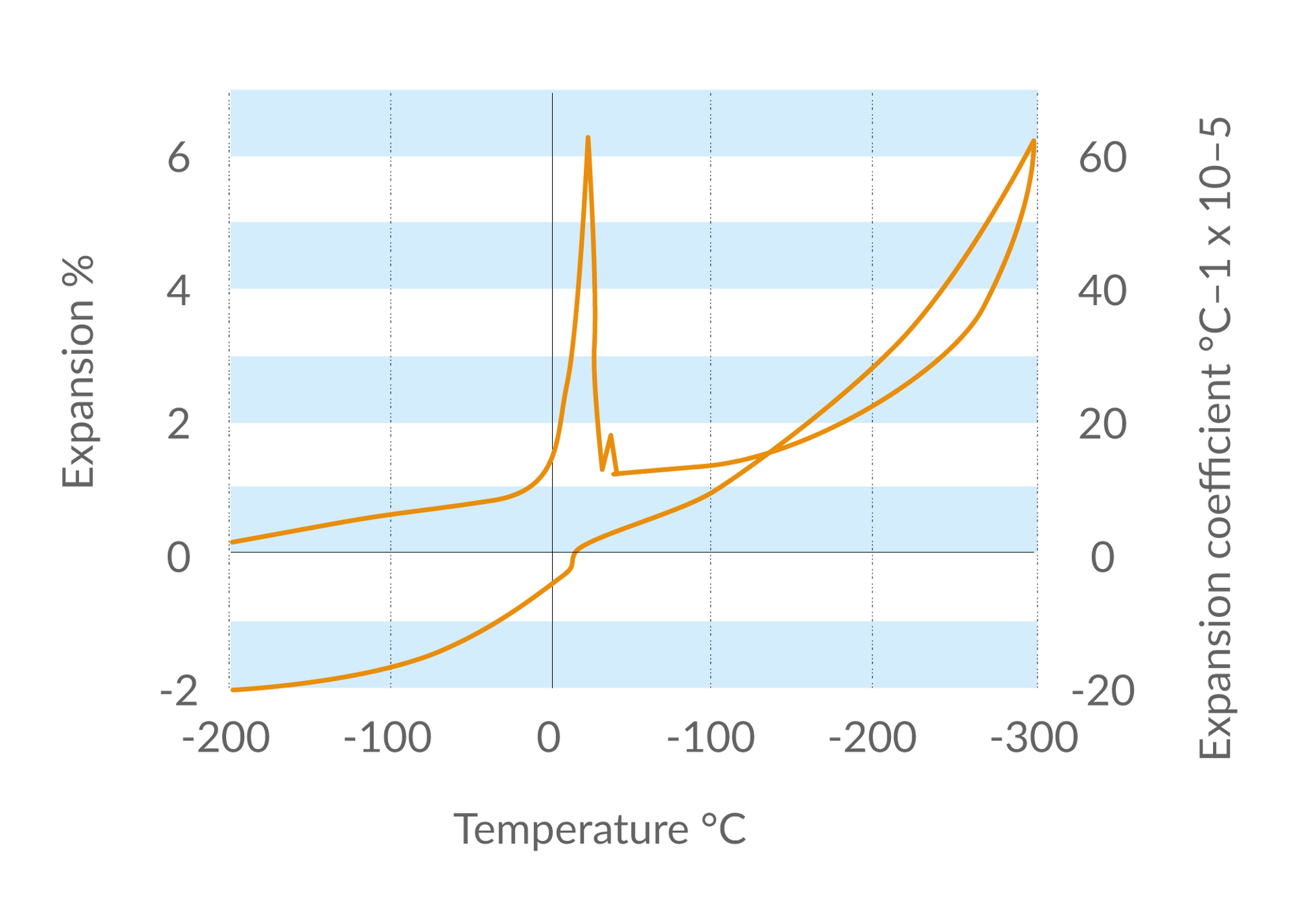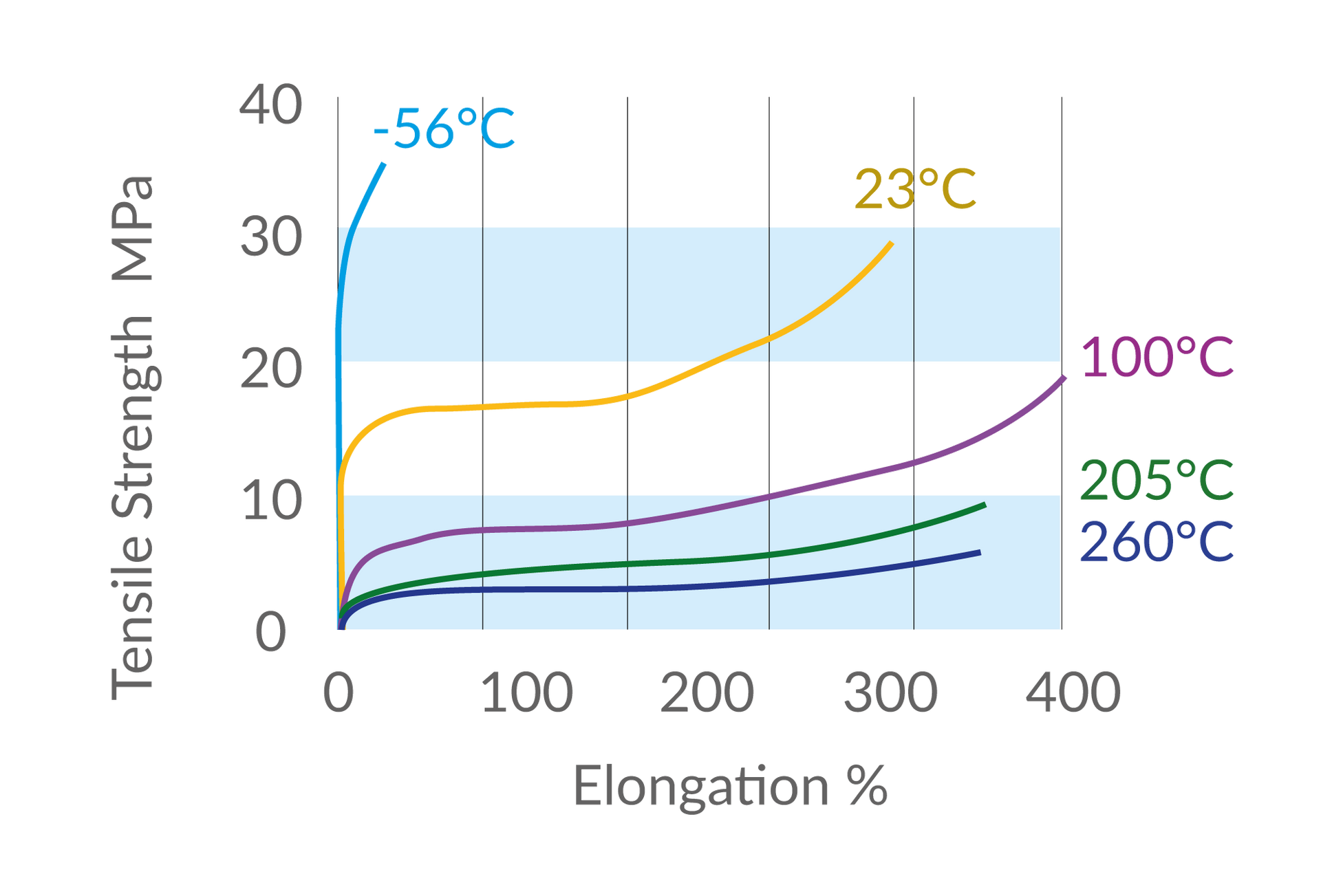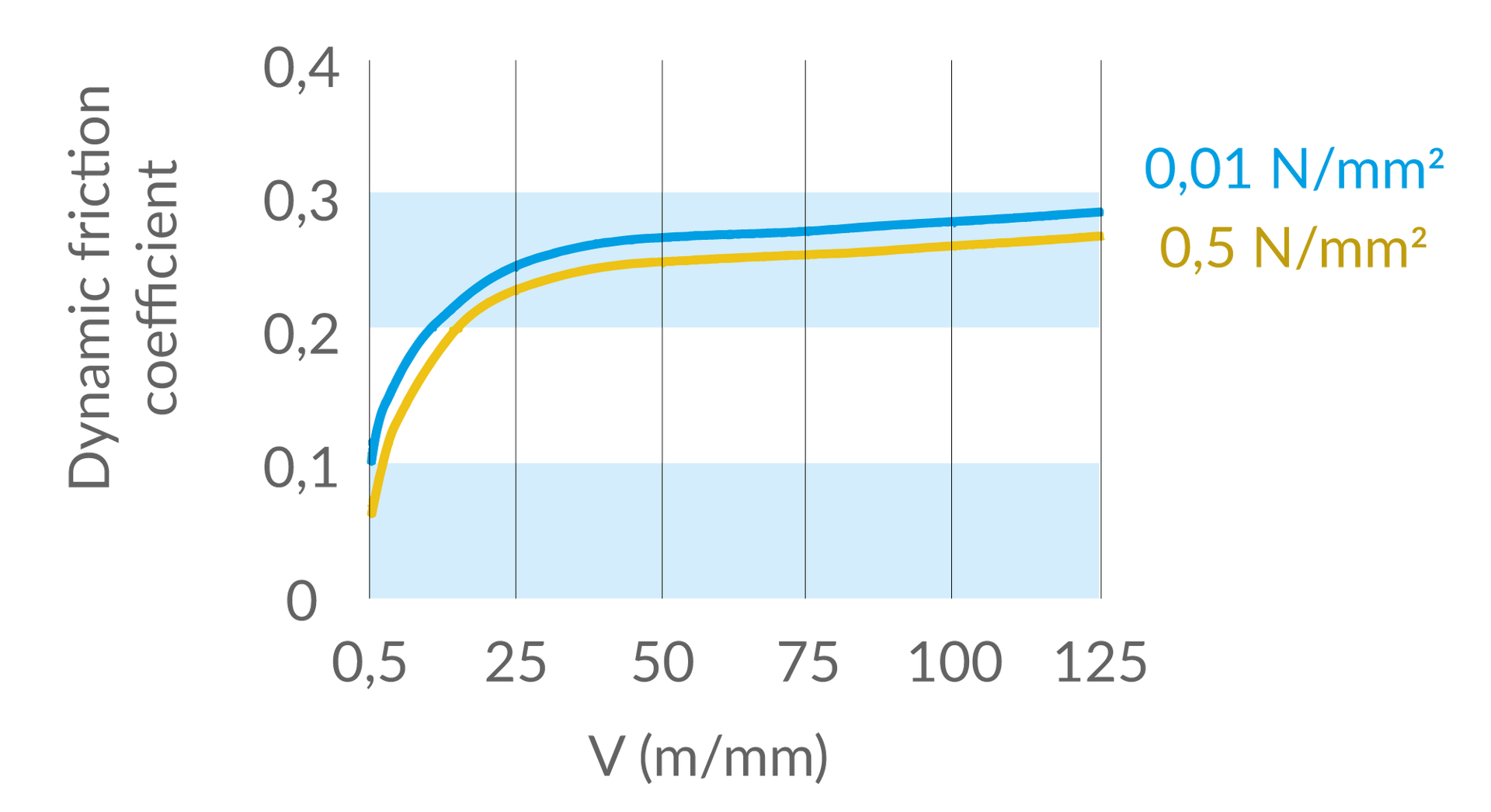
PTFE - Technical section
Virgin PTFE
granular from suspension polymerization homopolymer and modified
Table 1 shows the typical properties of moulded items from homopolymer and modified PTFE determined according to the listed methods.
In brackets the same refers to extruded items.
Thermal properties
Thermal stability
PTFE is one of the most thermally stable plastic materials. It maintains most of its properties up to 260°C. Appreciate decomposition starts over 400°C.
Transition points
The most important points of glass transition in the PTFE are: at 19°C there is an increase in volume and at 340°C PTFE changes from its crystalline structure to an amorphous phase (melting point), while still keeping a high viscosity level.
Expansion
The linear thermal expansion coefficient varies with the temperature. In addition, because of the orientation caused by the working process, the PTFE items are in general anisotropic; in other words, the coefficient of expansion varies also in relation to the direction.
Thermal conductivity
The thermal conductivity of PTFE changes with the temperature variation, however this value remains very low, therefore, PTFE can be considered as a good insulator. The addition of selected fillers will change the thermal conductivity value according to specific applications.
Specific heat
The specific heat can be considered constant if the temperature range is far from the phase transition value.

Fig. 1
PTFE linear thermal expansion and expansion coefficient vs. temperature
Behaviour in presence of chemicals and weathering environments
Resistance to chemicals
PTFE is practically inert to chemicals. It can be attacked only by the alkaline metals in the elementary state, Chlorine trifluoride and Fluorine at high temperatures and pressures.
Solvent resistance
PTFE is insoluble in almost all solvents at temperatures up to about 300°C. Some highly fluorinated oils, at temperatures over 300°C, cause a certain swelling effect upon PTFE.
Resistance to weathering and UV
Specimens of PTFE items, exposed for over forty years to the most variable weather conditions, have not shown any remarkable change of their properties.
Resistance to radiations
PTFE resistance to radiations is limited. It is higher in a vacuum enviroment than in air.
Gas permeability
The permeability does not depend only on the thickness and pressure, but also on the PTFE processing techniques.
Physical - mechanical properties
Tensile and compressive properties
These properties are to a large degree influenced by the PTFE processing conditions and the type of polymer. PTFE, however, can be used continuously up to 260°C, while still maintaining a certain plasticity at temperatures near to absolute zero.
The modification of the molecular structure of the polymer (PTFE modified) improves creep properties.
Flexibility
PTFE is quite flexible and does not break when submitted to stresses of 0,7 MPa according to ASTM D 790. Flexural modulus is between 350 to 650 MPa at room temperature, 2000 MPa at -80°C, 200 MPa at 100°C and 45 MPa at 260°C.
Modified PTFE has an improved flex life.
Impact properties
PTFE has very high resilience properties at low temperatures.
Plastic memory
If a piece of PTFE is subjected to tensile or compression stressed below the yield point, it will keep some induced stress (permanent deformation) after the end of the mechanical operation. If the piece is reheated it loses all the induced stress and it returns to its original form. This property is known as "plastic memory" which can be very useful in many applications.
Hardness
The hardness, measured according to the method ASTM D 2240 has values between 50 - 60 Shore D.
Friction coefficient
PTFE has the lowest friction coefficients of all solid materials, between 0,07(static) and 0,05(dynamic):
the static and dynamic friction coefficients are similar so that there is no seizure or stick-slip action
the friction coefficient increases with the speed (fig.3)
the friction coefficient remains constant with temperature variations.
Wear
The wear depends on the characteristics of the sliding surface, the speed and loads (PV). The wear is considerably reduced when adding suitable fillers to the PTFE (see filled PTFE).

Fig. 2
PTFE tensile strength vs elongation

Fig. 3
Influence of sliding velocity on dynamic friction coefficient
Electrical properties
PTFE is an excellent insulator and as shown by data reported in table 1, maintains these properties throughout a large range of temperatures and frequencies.
Dielectric strength
The dielectric strength of PTFE, depends on the processing conditions, varies with the thickness and decreases with increasing frequency. It remains pratically constant up to 300°C. The modified polymer shows a remarkable improvement in dielectric strength and a lower porosity.
Costante dielettrica e fattore di dissipazione
Il PTFE possiede ottimi valori di costante dielettrica e di fattore di dissipazione; essi rimangono invariati fino a 300°C, in un campo di frequenze fino a 109 Hz e anche dopo prolungato trattamento termico.
Resistenza all’arco
Il PTFE possiede una buona resistenza all’arco. Il tempo di resistenza all’arco secondo ASTM D 495 è di 700 sec..
Anche dopo azione prolungata, non si notano però carbonizzazioni delle superfici.
Resistenza all’effetto corona
Le scariche dell’effetto corona possono anche provocare erosioni alle superfici del PTFE che viene comunemente indicato come isolante idoneo in caso di elevate differenze di potenziale.
Surface properties
The fluor content in molecular configuration of PTFE gives its surfaces high anti-stick properties. For the same reason these surfaces are hardly wettable.
A special etching treatment makes the surfaces bondable and wettable.
Dimensional tolerances
Dimensional tolerances for basic shapes listed in the following tables are for virgin PTFE and refer to standard ISO 13000-1.
Dimensional tolerances shall be measured at 23±2°C.

PTFE - Technical section





